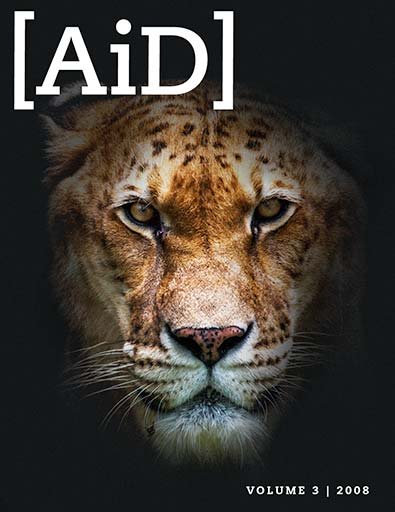
Unique Fungal RNA Splicing Mechanism Strikes a Blow Against Darwinian Evolution
Abstract
A recent study claimed to offer proof of the RNA-world hypothesis or the origin of life. The evidence, however, is greatly lacking.
Keywords: fungi, RNA, Darwinian evolution, naturalism, Neurospora crassa, distinct kind, life, genetics, exon, intron
One of the tenets of evolutionary naturalism is that before life evolved, an RNA-only world existed (the “RNA world” hypothesis) in which the RNA molecule functioned to both transmit information and perform enzymatic reactions.1 In eukaryotic (i.e. nucleus-containing) organisms, genes are composed of alternating regions of coding and non-coding DNA (exons and introns, respectively). In order for a given protein to be made, these intron sequences must be excised or “spliced” from the RNA message that was derived from the DNA sequence.
Three classes of introns have been described: group I, group II, and nuclear pre-mRNA.2 Both group I and II introns are self-splicing (meaning that the RNA itself acts as an enzyme and carries out the splicing reaction without the need for proteins). These introns are found in organelles in eukaryotes (i.e., mitochondria) and bacteria. The ability of group I and II introns to catalyze self-splicing reactions bolstered the RNA world hypothesis, since proteins would not be needed initially for enzymatic reactions, making splicing simpler. However, higher eukaryotes, such as plants and animals, utilize a large protein and RNA-containing complex known as the spliceosome to remove nuclear pre-mRNA introns. The evolution from RNA-only to protein-based splicing has never been observed or defined.
A recent article on PhysOrg.com touts the supposed elucidation of this missing link in the evolution from RNA-only to protein-based splicing function.3 Scientists from Purdue University published a paper in the journal Nature, describing the crystal structure for the protein tyrosyl-tRNA synthetase (TyrRS) bound to a group I intron RNA.4 Since group I introns have not been observed to require proteins for splicing, this is seen as evidence for the evolution from an RNA-only splicing reaction to a protein-based splicing reaction. But is this really evidence for evolution?
A Closer Look
In the Nature article, the researchers describe a group I intron from the model fungus Neurospora crassa (a mold used as a model organism for studying such topics as circadian rhythm, meiosis, gene silencing, etc.) that requires a TyrRS protein for efficient splicing of group I introns. This is important to the hypothesis of evolutionary progression from RNA to protein-based splicing reactions, as part of the TyrRS protein aids in stabilization of the RNA molecule during intron removal. In other group I introns, this is done entirely by the RNA itself.
This adaptation, found only in the subphylum Pezizomycotina, is extolled as a “missing link” in the evolution from RNA-only to protein-based splicing reactions. The PhysOrg.com article quotes one of the authors: “The crystal structure provides a snapshot of how, during evolution, protein molecules came to assist RNA molecules in their biological functions and ultimately assumed roles previously played by RNA.” Really? According to the paper, this system is unique to the Pezizomycotina; no other fungi, let alone other higher eukaryotes (i.e., animals), possess this mechanism for group I intron splicing. If this system snapshot shows how proteins usurped roles from RNA, then why is not this system more common among higher eukaryotes?
The PhysOrg.com article glosses over the unique properties of this splicing system. The N. crassa TyrRS protein described in this article exhibits three domains unique to this protein in the subphylum Pezizomycotina. These three protein domains act to stabilize portions of the RNA within the intron being excised. The authors postulate that the enzymatically active region of these group I introns extended via multiple steps from an RNA-only surface to include a previously unused surface of the TyrRS protein. The authors state that this happened in a relatively short amount of evolutionary time (approximately 360 million years ago), but provide no rational explanation for the appearance of these three unique protein domains in the N. carassa TyrRS, given that they supposedly arose in an unused portion of the protein (hence, were not under any kind of selection pressure at the outset). This constitutes circular-reasoning regarding the origin of this unique RNA-protein structure. The fact that these unique domains appear nowhere else in eukaryotes except for other members of the Pezizomycotina argues against their evolutionary importance and underscores the dubiousness of these data as evidence for the evolution of the splicing mechanism from RNA-only to RNA and protein.
A biblical view of these data shows a uniquely designed system for intron splicing in N. crassa. The existence of this splicing system only in the Pezizomycotina suggests that this subphylum of eukaryotes may constitute the descendants of a distinct kind of fungi created by God. Data gleaned from similar studies on other microorganisms should provide insight into how these organisms segregate into various created kinds, answering an important taxonomical question about these amazing creations which are so vitally important in our daily lives.
is a pseudonym. The writer, who holds a Ph.D. in a field related to the topic of this article, is a scientist at a prominent research facility in the eastern part of North America. He prefers to keep his creationist credentials hidden for the moment until he achieves more seniority.
Footnotes
- Walter Gilbert, “The Origin of Life: The RNA World,” Nature 319 (1986): 618.
- Benjamin Lewin, Genes VII (New York: Oxford University Press, 2000).
- PhysOrg.com, “Scientists find missing evolutionary link using tiny fungus crystal,” January 2, 2008.
- Paul J. Paukstelis et al., “Structure of a tyrosyl-tRNA synthetase splicing factor bound to a group I intron RNA,” Nature 451 (2008): 94–97.
Recommended Resources

Answers in Genesis is an apologetics ministry, dedicated to helping Christians defend their faith and proclaim the good news of Jesus Christ.
- Customer Service 800.778.3390
- Available Monday–Friday | 9 AM–5 PM ET
- © 2025 Answers in Genesis




